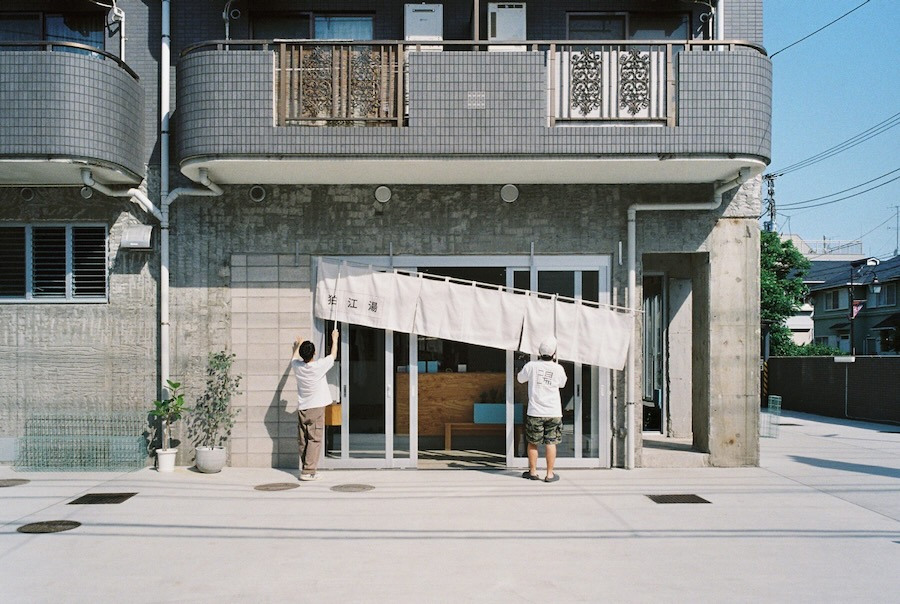
all photos by Ju Yeon Lee courtesy Schemata Architects
The number of public baths, or sento as they’re referred to in Japan, have been in chronic decline since the late 1960s. As the number of homes with their own private bath proliferated, public bathhouses shrank from over 18,000 to under 2000 today. But sento were more than just about improving public hygiene in post-war Japan. They became part of a daily routine, a bedrock of local community, where neighbors would gather and connect after a long day’s work. Komaeyu, located in a western suburb of Tokyo, is part of a budding movement to rethink the role of sento for contemporary lifestyles and preserve sento culture.
advertisement
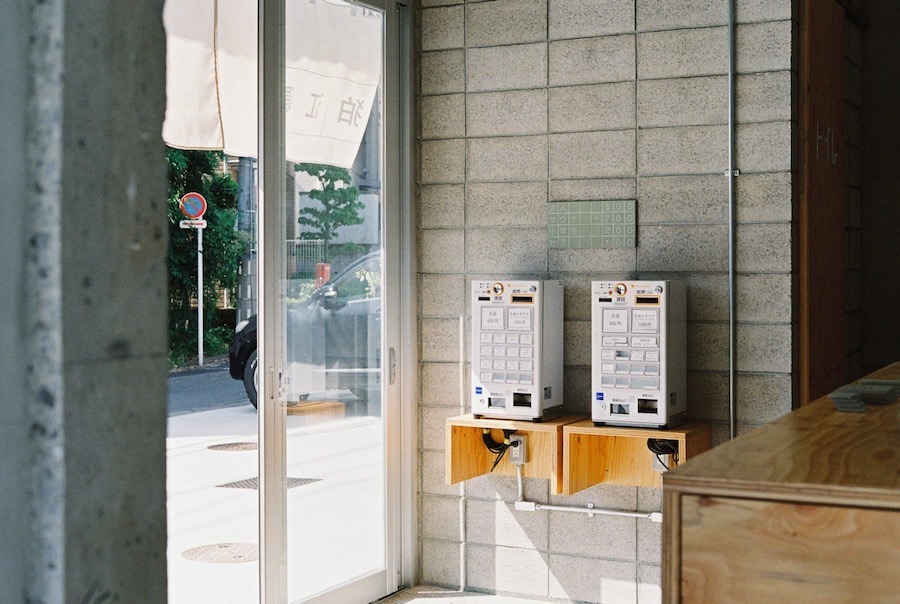
Komaeyu originally opened in 1954 and has been a gathering place for the local community of Komae for almost 70 years. “Some customers come to the bathhouse as part of their daily routine even though they have a bath at home, but this is not enough to carry on the bathhouse business to the next generation,” explains architect Jo Nagasaka, who previously helped renovate the Koganeyu sento back in 2020.
Applying a similar approach, Nagasaka designed additional facilities for Komaeyu, which include a sauna and bandai (reception counter) that doubles as a bar where guests can enjoy a cold beer, and other non-alcoholic beverages and snacks, after their bath. Nagasaka also took full advantage of the raw materials in the space, emphasizing the building’s reinforced concrete walls and adding raw plywood to complement the gritty look-and-feel.
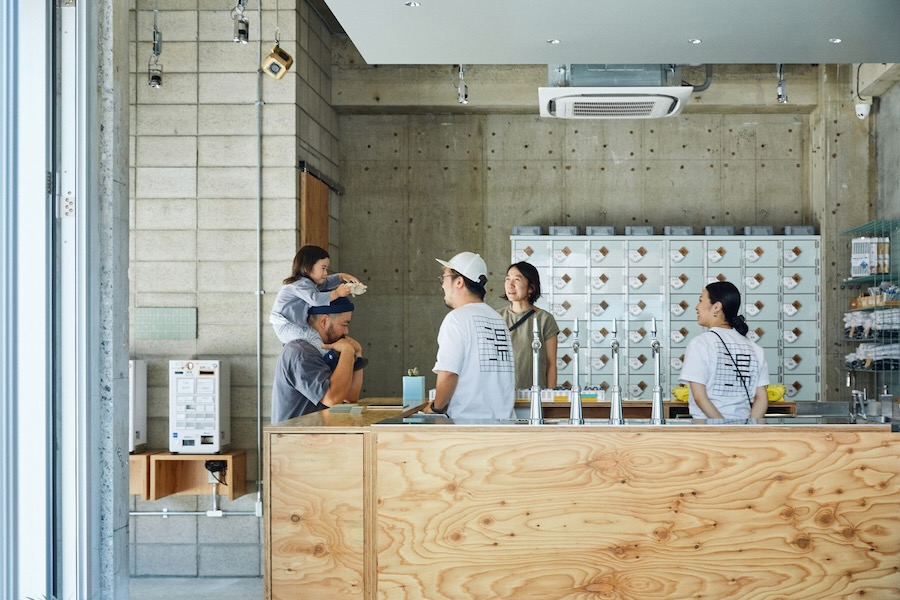
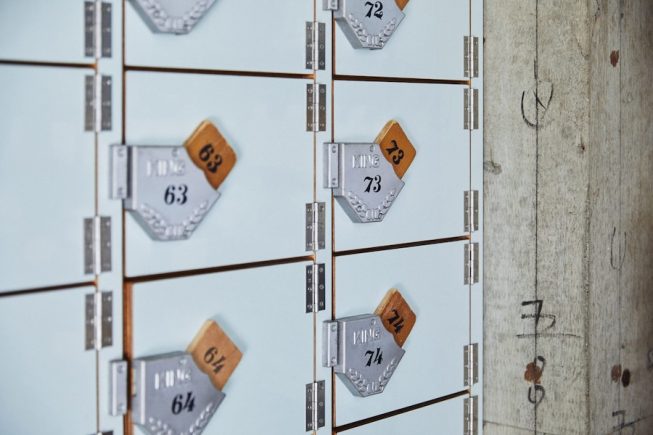
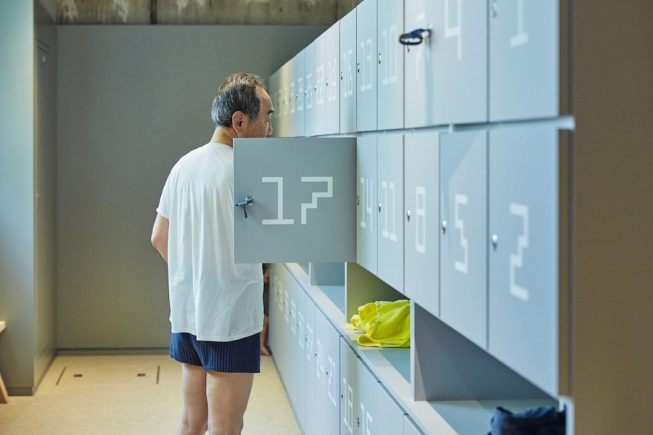
The design team also custom-created original green tiles in Tajimi to connect the sento with the neighborhood’s greenery. The tiles, or lack thereof, also spell out the different baths such as 炭酸泉 (carbonated spring water) or ジェット湯 (jacuzzi). Next to the reception counter, the tiles also crate an image of Mt. Fuji, which is a staple of all sento bath houses.
All are welcome at Komaeyu, including those with tattoos. General admission is 500 yen and there are discounts for kids.
Komaeyu
1-12-6 Higashiizumi, Komae, Tokyo (google map)
Hours: 1PM – 11PM
Closed Tuesdays
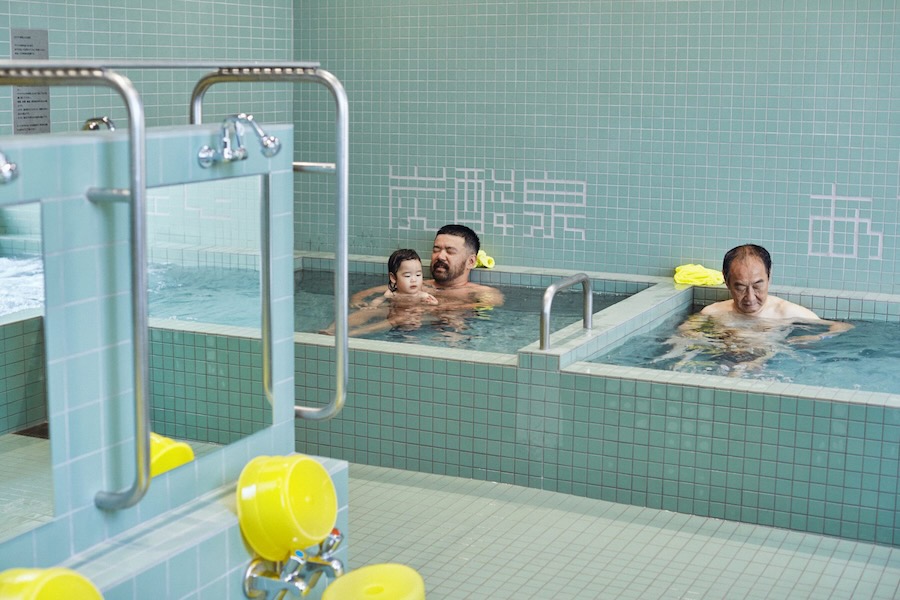
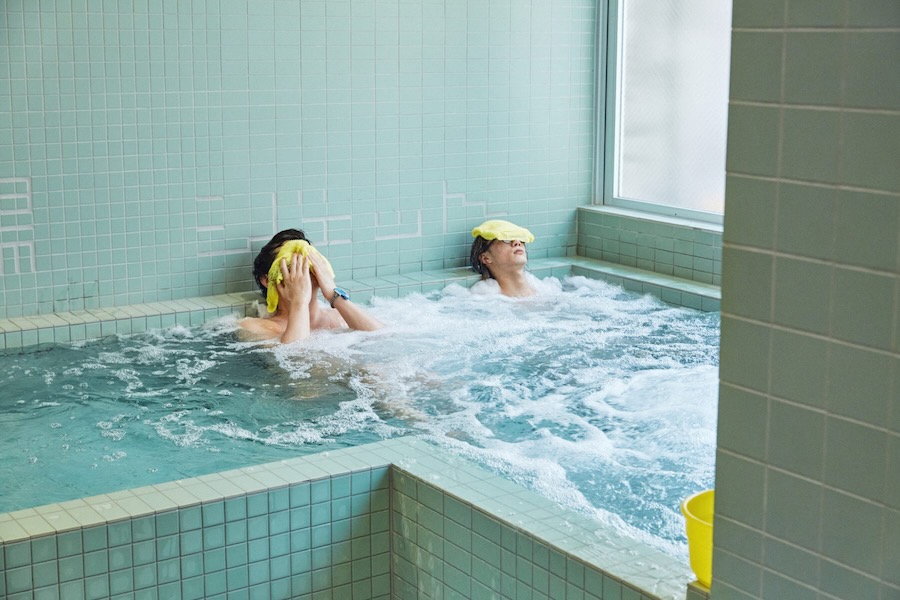
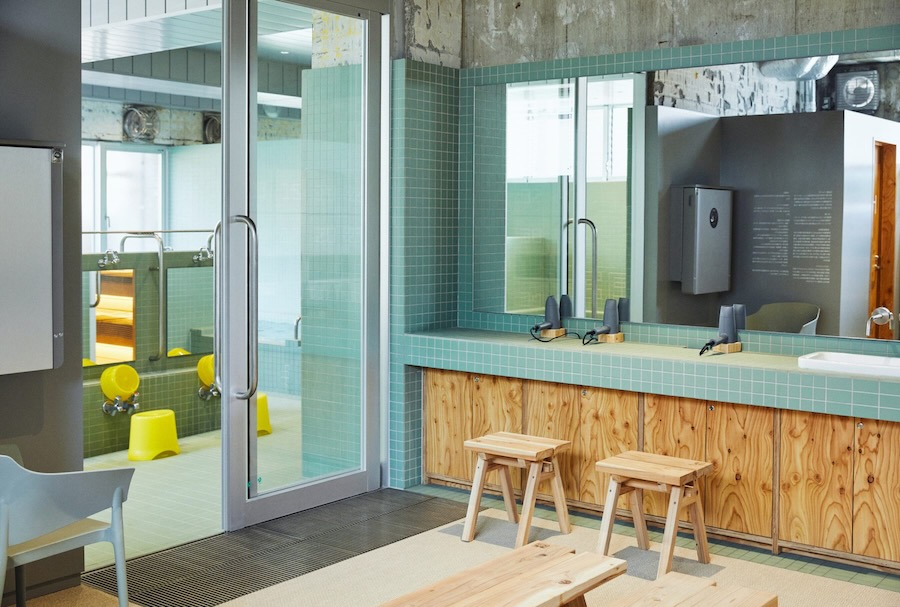
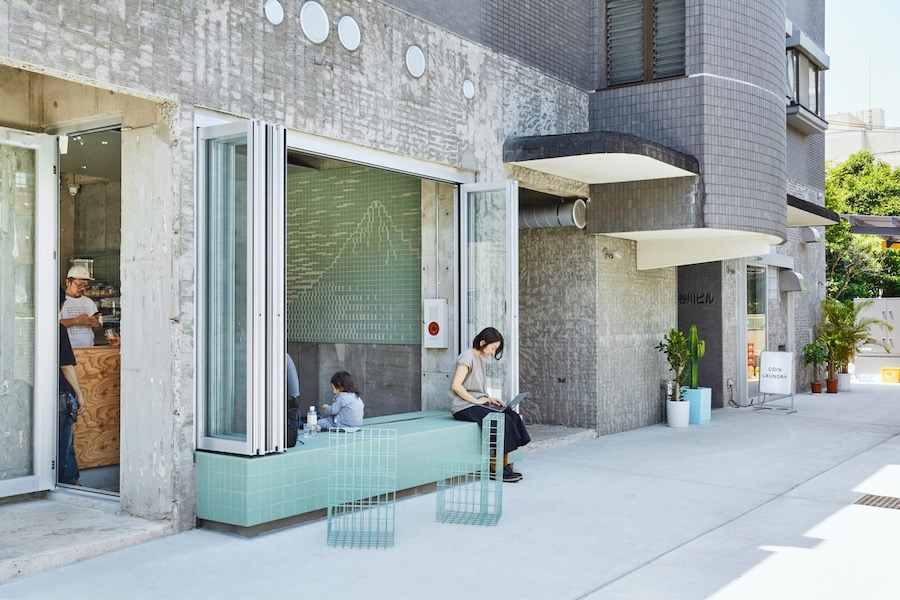


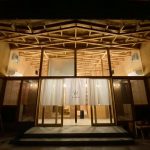
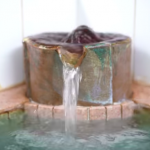



















July 31, 2023 at 10:32 am
I lived in Edogawa-ku in Tokyo from 1977 to 1979 and I loved to go to the sento across the street from where I lived. Many pleasant memories.
I returned to the US in 1995 after 18 years. The other towns where I lived did not have sento close to the places I lived, but I went to many onsen resorts throughout those years. None of them had the same kind of feeling as that first sento in Tokyo.
I would love to visit this establishment the next time I visit Tokyo.
August 1, 2023 at 5:21 pm
Thanks for sharing, Liam! I hope you are able to visit this sento too!
August 4, 2023 at 7:39 pm
Glad to hear it is tattoo friendly. When my family and I visited four years ago, we didn’t go to sento or onsen because my husband has a 3/4 sleeve, and I have three small tattoos in three different places and felt taping it up wouldn’t work. Can’t wait to visit when we make another trip to Japan in a couple of years.